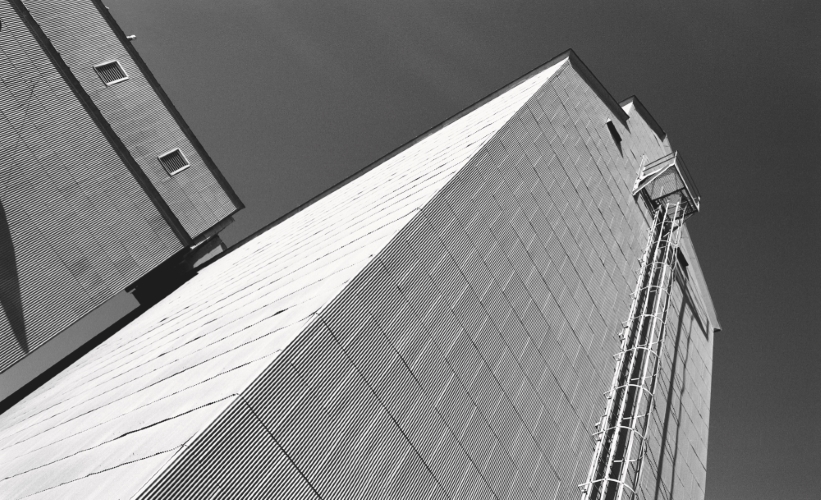Grain elevators such as this one in Hatton, North Dakota are constructed from dimensional lumber where the 2 by 4, 2 by 6, and larger planks are stacked together on their sides and nailed, creating a thick lumber wall that grew thinner as it rose. The lumber was stacked to make side-by-side bins, usually 4 to 12 in a structure. Once the bins were constructed to height, a deck was installed to cover the bins and make a floor for the equipment needed to elevate the grain. Nested in the center, the "grain elevator" or more commonly known today as a bucket elevator lifted the grain from the ground level to the top of the bins. This gave the building its iconic shape, seen in countless paintings and photographs today. When complete, it was covered with the sheetmetal shown in the photo, which protected the wood and was easy to maintain.
